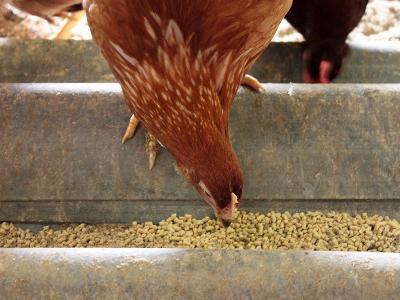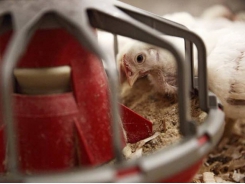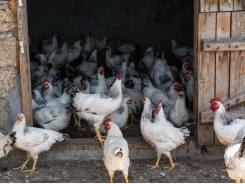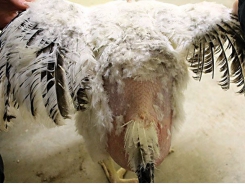New developments in layer hen feeding

Ioannis Mavromichalis, Ph.D., gives his views on poultry, pig and dairy nutrition based on his experience as a nutrition consultant with clients around the world.
Photo by Andrea Gantz
A new method has been proposed that adapts the normal behavior of the hen to the requirements of modern farming.
A single diet offered during the early hours of the light period with some source of calcium top-dresses during the afternoon is the standard feeding program for layers worldwide. Yet a new method has been proposed that adapts the normal behavior of the hen to the requirements of modern farming. This method, called split feeding, is based on the principle that two feeds can be offered, one in the morning and another in the afternoon, at different quantities and with different nutrient composition. The morning feed focuses on the protein and energy requirements of the hen, whereas the afternoon feed focuses on the calcium requirement that coincides with eggshell formation.
In preliminary studies, hens in split-feeding regimens consumed slightly less nutrients and eggshell quality remained strong or improved. Thus, not only was normal feeding behavior allowed, but profitability increased if we discount the extra cost of logistics for the second feed. This reduction in nutrient intake can have further positive consequences in terms of reduced nitrogen and phosphorus excretion and less stress on the hen coming from the excessive consumption of calcium needed to sustain eggshell quality, especially during the late laying period.
Of course, this system remains in the experimental stage as more work is needed to verify and fine-tune the details of each feed, but it appears to be a promising development. In addition, the logistics of the second feed currently prohibit the incorporation of this novel method into most existing facilities, but this is something that can be resolved, or included, in the design of new facilities. Nevertheless, it is something that requires attention.
For more information, the read the relevant proceedings from the 2016 Poultry Federation Conference.
Ioannis Mavromichalis, Ph.D., is Nutrition Editor for WATTAgNet and Editor-in-Chief of Pig International
Related news
Tools

Phối trộn thức ăn chăn nuôi

Pha dung dịch thủy canh

Định mức cho tôm ăn

Phối trộn phân bón NPK

Xác định tỷ lệ tôm sống

Chuyển đổi đơn vị phân bón

Xác định công suất sục khí

Chuyển đổi đơn vị tôm

Tính diện tích nhà kính

Tính thể tích ao




 Warning for US egg producers: Beware of free-range…
Warning for US egg producers: Beware of free-range…  Europe, Asia, Africa on heightened alert for avian…
Europe, Asia, Africa on heightened alert for avian…